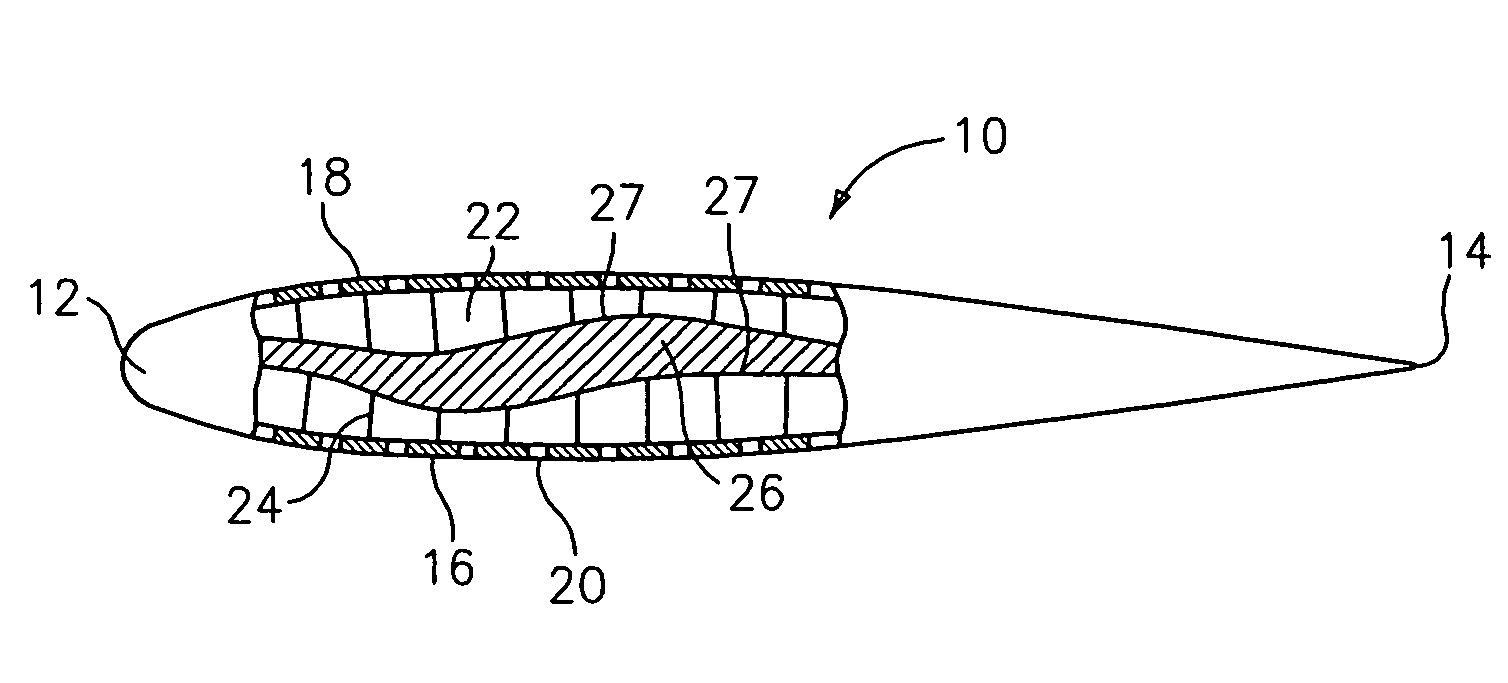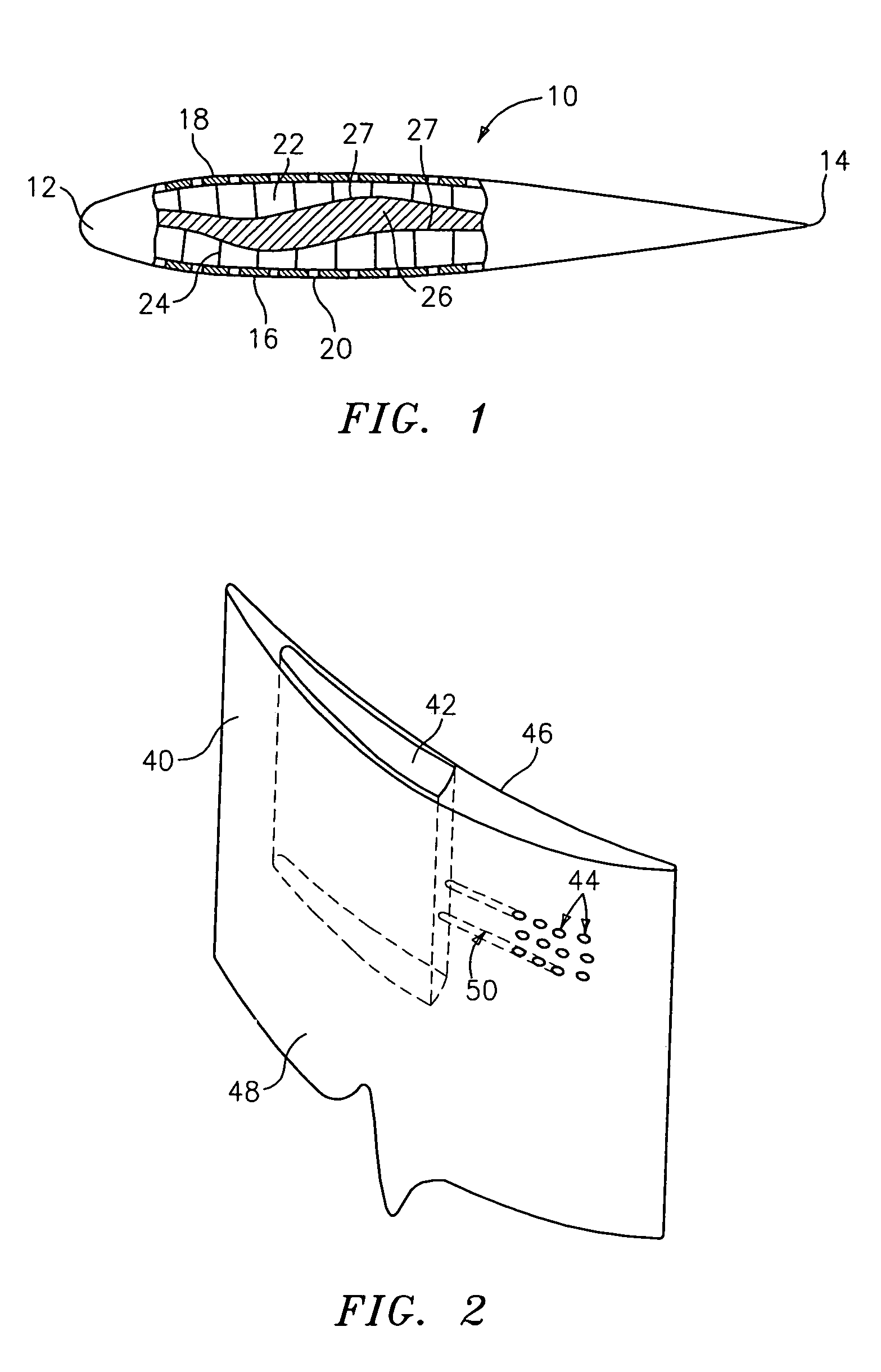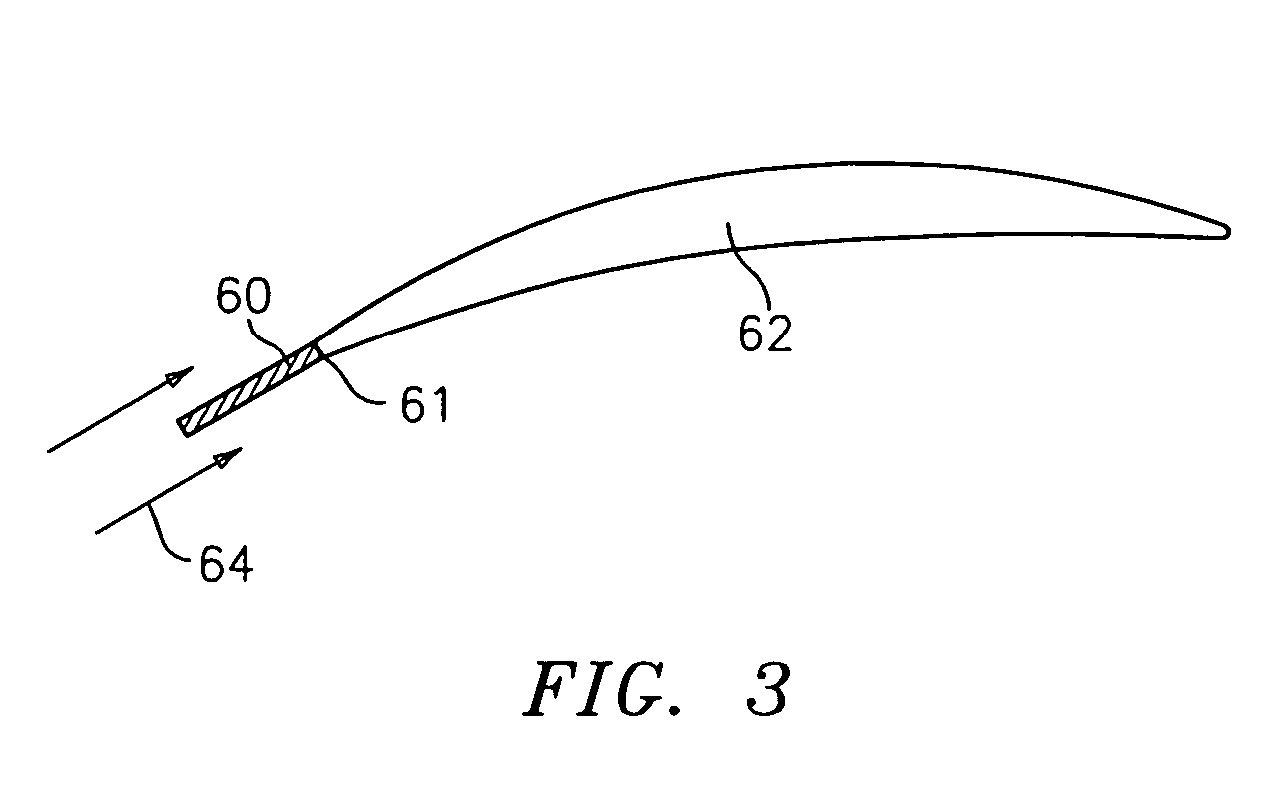Airfoil surface impedance modification for noise reduction in turbofan engines
a technology of airfoil surface impedance and turbofan engine, which is applied in the direction of marine propulsion, vessel construction, other chemical processes, etc., can solve the problems of large weight increase at high bypass ratio, difficult to meet the requirements of high-efficiency turbine engines, and high noise of fan noise. achieve the effect of reducing noise in gas turbine engines
- Summary
- Abstract
- Description
- Claims
- Application Information
AI Technical Summary
Benefits of technology
Problems solved by technology
Method used
Image
Examples
first embodiment
[0018]Referring now to the drawings, FIG. 1 illustrates an engine component 10 having a means for reducing the noise generated by a gas turbine engine. The component 10 may be a vane or a blade used in the engine. As can be seen from FIG. 1, the component 10 has a leading edge 12, a trailing edge 14, and a first surface 16 and a second surface 18 which extend from the leading edge 12 to the trailing edge 14. Each of the surfaces 16 and 18 has a plurality of perforations or apertures 20. The component 10 is divided into a plurality of cells 22 by transverse elements 24 and a contoured backing 26. The contoured backing 26 may be an acoustic liner formed from any suitable metallic or non-metallic material known in the art. The depth of each cell 22 is varied by the shape of the backing 26 which varies in the chordwise direction.
[0019]In operation, a fluid, such as air, flows over the surfaces 16 and 18 and enters the cells 22. The presence of the backing 26 prevents the air from passin...
third embodiment
[0022]a noise reduction technique is illustrated in FIG. 3. In this embodiment, a short length plate 60 of uncambered, porous material is attached to the leading edge 61 of an airfoil portion 62 of an engine component. The plate 60 is oriented parallel to the mean flow direction 64. Unlike the previous embodiments, the flows streams on either side of the plate 60 now communicate with each other. However, because of the orientation of the plate 60 along the inflow direction, its impact on the steady loading is minimal. Unsteady disturbance such as those induced by incoming rotor wakes will however be significantly affected by the impedance of the plate 60. This will have an effect on the unsteady airfoil loading and thus the noise that is generated. Despite a superficial resemblance to the device shown in U.S. Pat. No. 6,139,259 to Ho et al., the fundamental difference here is that the resistive element is not contained within the working portion of the airfoil, i.e. within the zone ...
PUM
 Login to View More
Login to View More Abstract
Description
Claims
Application Information
 Login to View More
Login to View More - R&D
- Intellectual Property
- Life Sciences
- Materials
- Tech Scout
- Unparalleled Data Quality
- Higher Quality Content
- 60% Fewer Hallucinations
Browse by: Latest US Patents, China's latest patents, Technical Efficacy Thesaurus, Application Domain, Technology Topic, Popular Technical Reports.
© 2025 PatSnap. All rights reserved.Legal|Privacy policy|Modern Slavery Act Transparency Statement|Sitemap|About US| Contact US: help@patsnap.com



